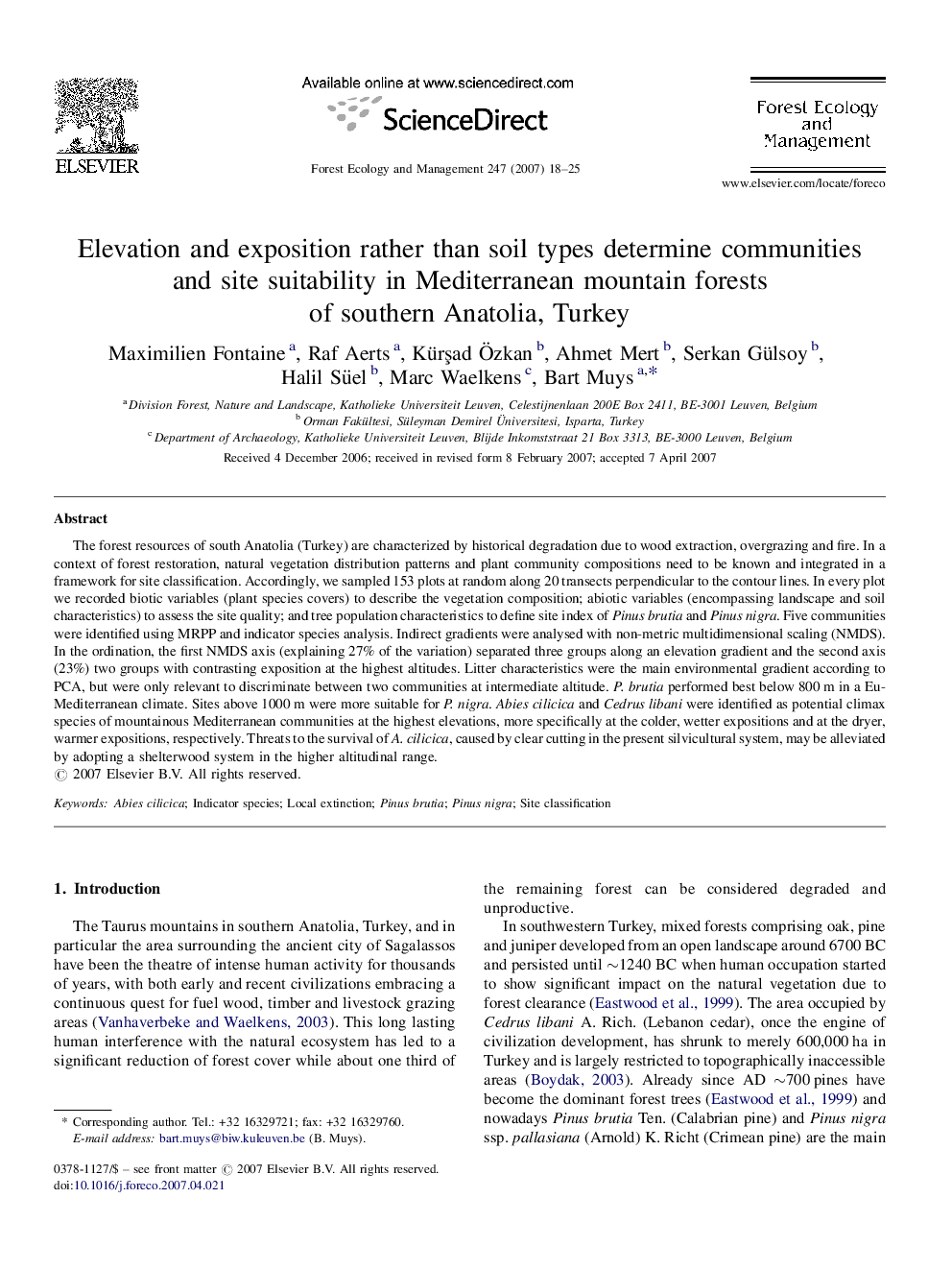| کد مقاله | کد نشریه | سال انتشار | مقاله انگلیسی | نسخه تمام متن |
|---|---|---|---|---|
| 90385 | 159378 | 2007 | 8 صفحه PDF | دانلود رایگان |

The forest resources of south Anatolia (Turkey) are characterized by historical degradation due to wood extraction, overgrazing and fire. In a context of forest restoration, natural vegetation distribution patterns and plant community compositions need to be known and integrated in a framework for site classification. Accordingly, we sampled 153 plots at random along 20 transects perpendicular to the contour lines. In every plot we recorded biotic variables (plant species covers) to describe the vegetation composition; abiotic variables (encompassing landscape and soil characteristics) to assess the site quality; and tree population characteristics to define site index of Pinus brutia and Pinus nigra. Five communities were identified using MRPP and indicator species analysis. Indirect gradients were analysed with non-metric multidimensional scaling (NMDS). In the ordination, the first NMDS axis (explaining 27% of the variation) separated three groups along an elevation gradient and the second axis (23%) two groups with contrasting exposition at the highest altitudes. Litter characteristics were the main environmental gradient according to PCA, but were only relevant to discriminate between two communities at intermediate altitude. P. brutia performed best below 800 m in a Eu-Mediterranean climate. Sites above 1000 m were more suitable for P. nigra. Abies cilicica and Cedrus libani were identified as potential climax species of mountainous Mediterranean communities at the highest elevations, more specifically at the colder, wetter expositions and at the dryer, warmer expositions, respectively. Threats to the survival of A. cilicica, caused by clear cutting in the present silvicultural system, may be alleviated by adopting a shelterwood system in the higher altitudinal range.
Journal: Forest Ecology and Management - Volume 247, Issues 1–3, 15 August 2007, Pages 18–25